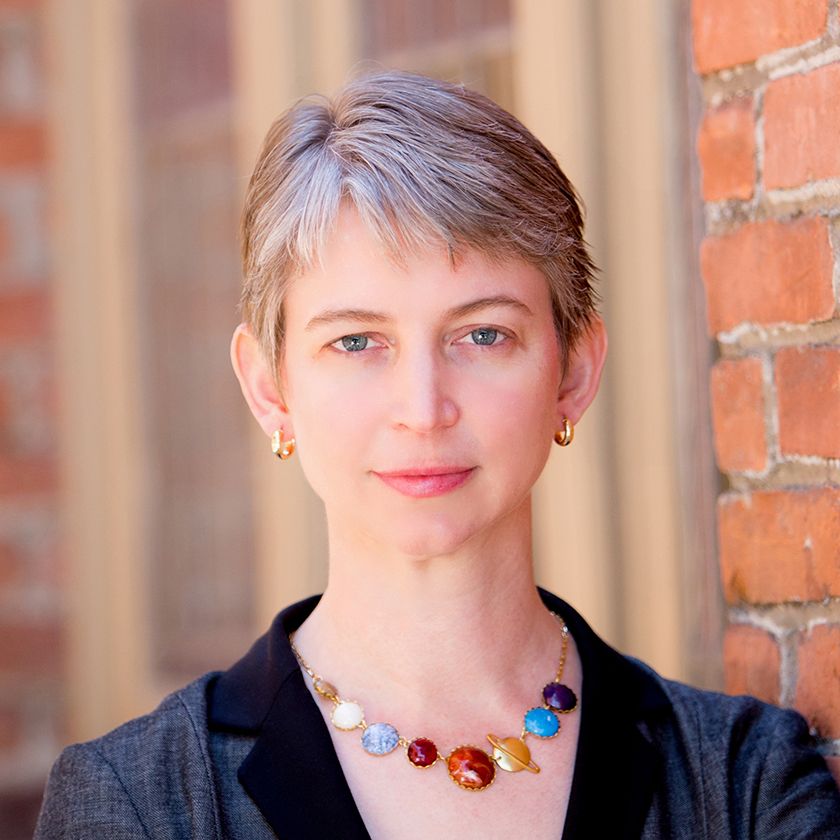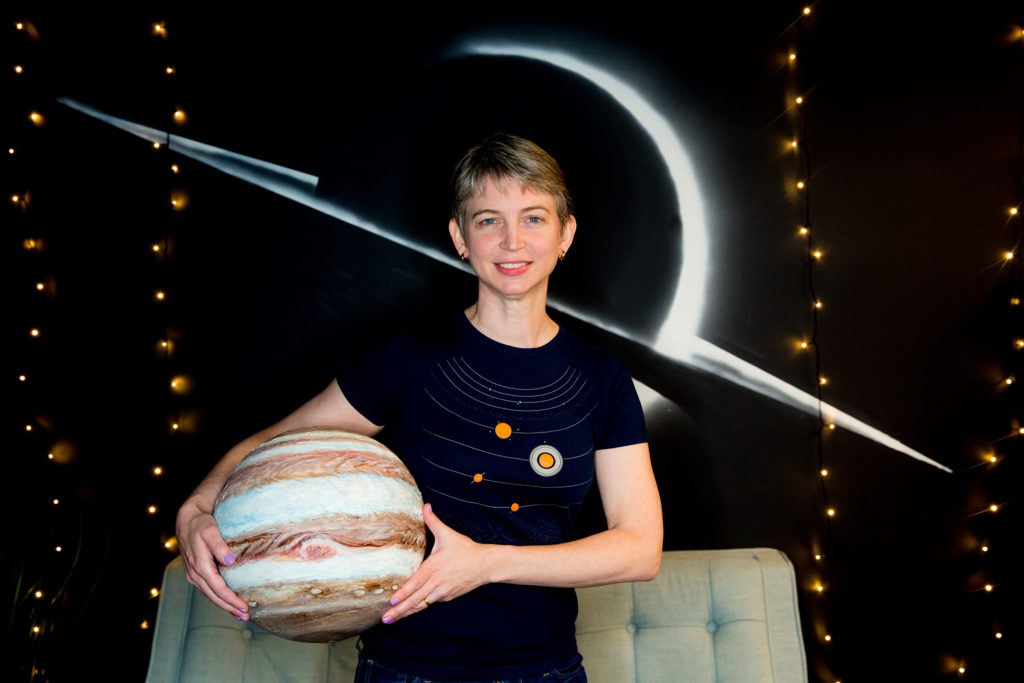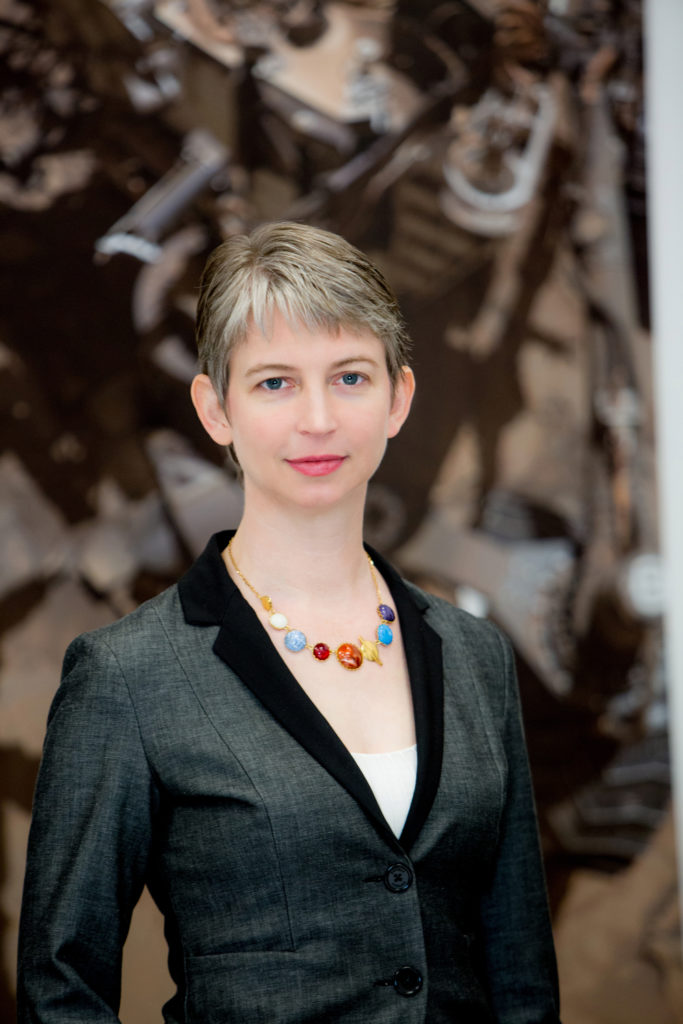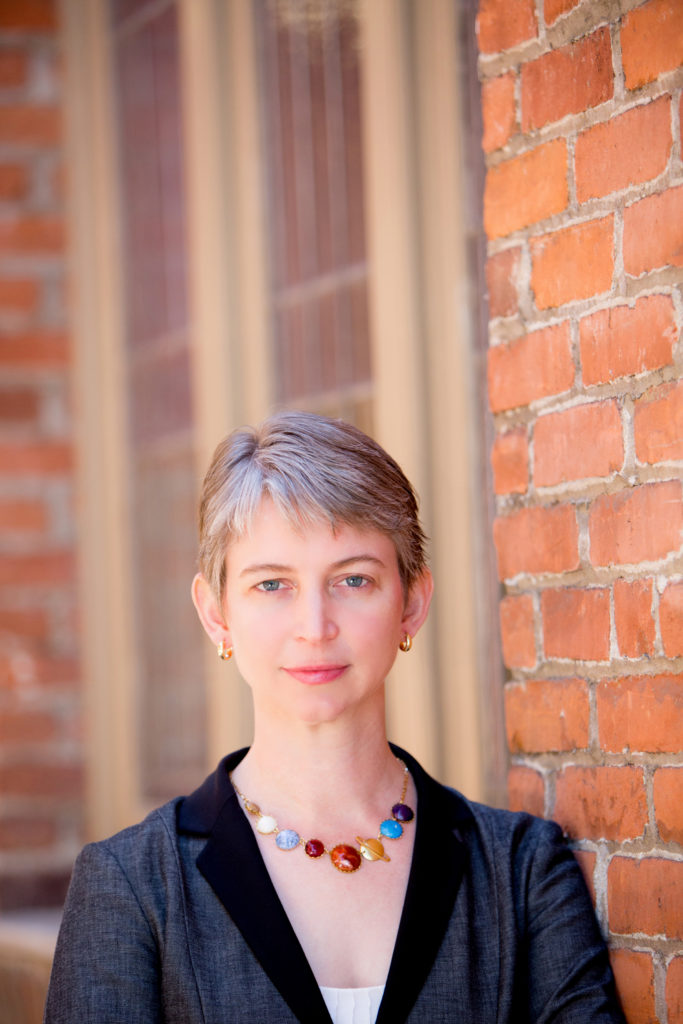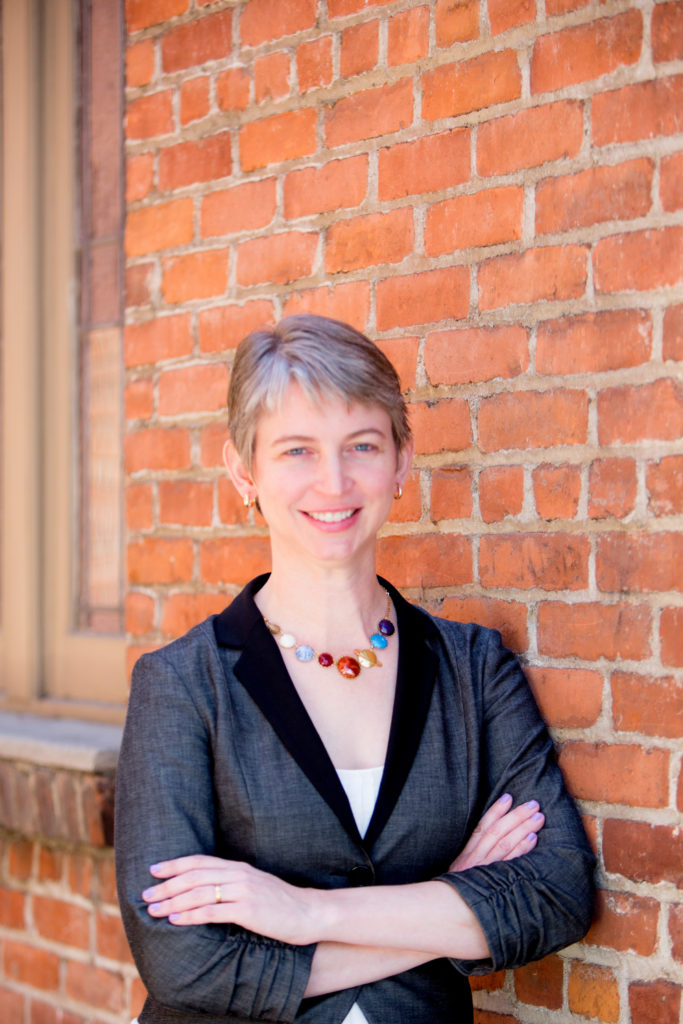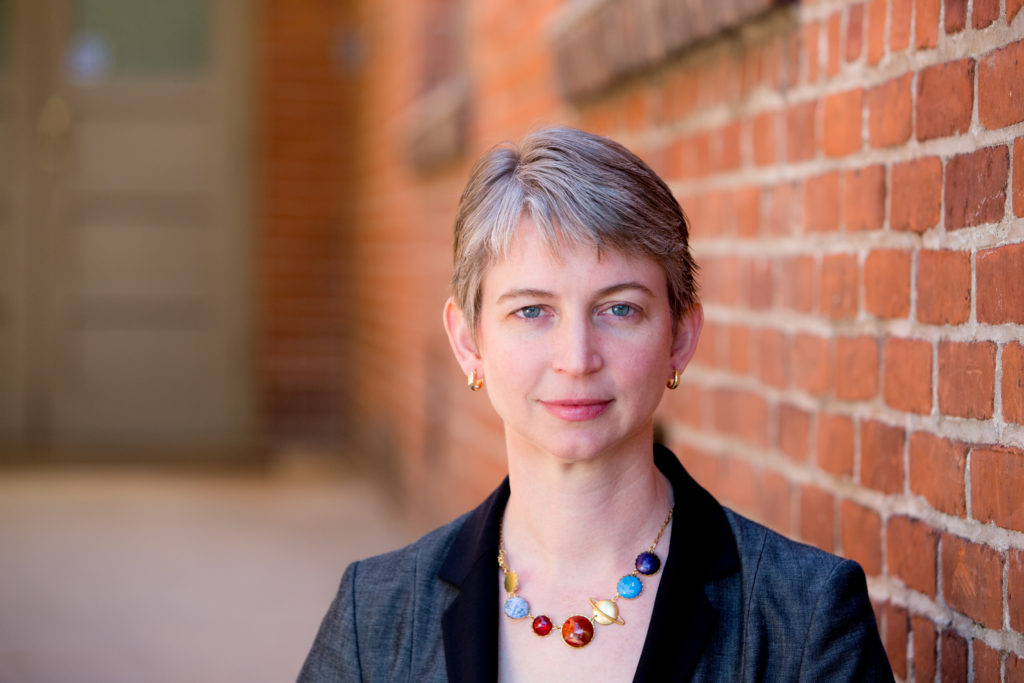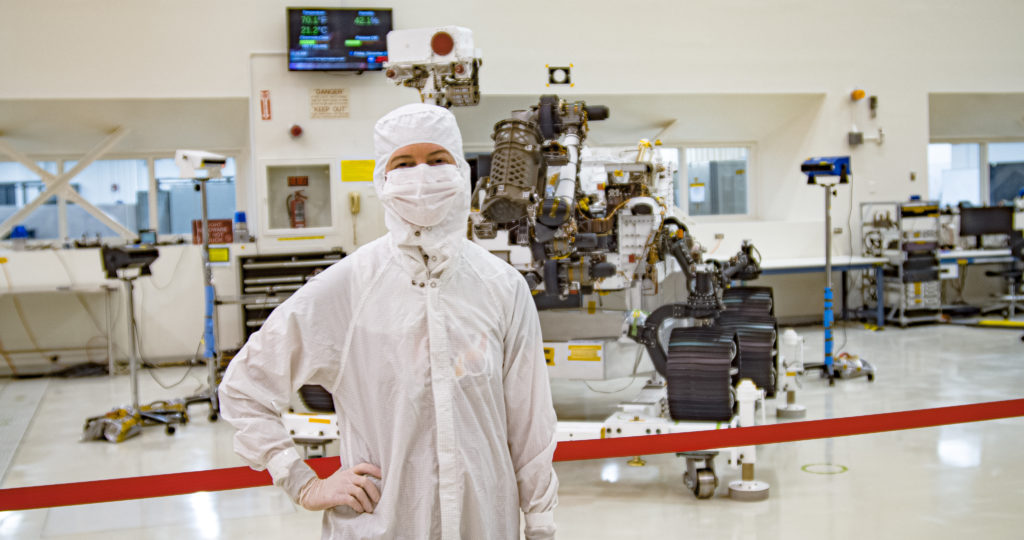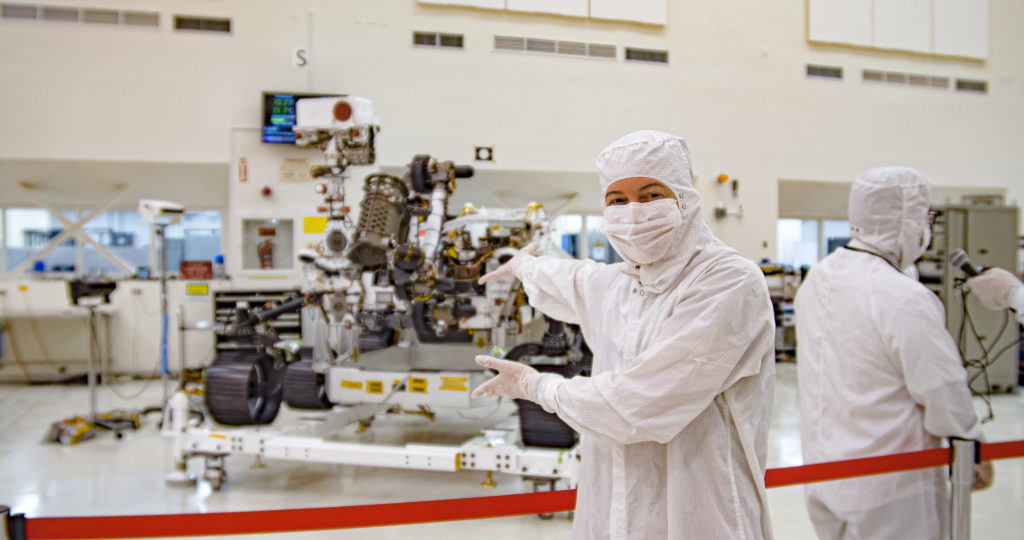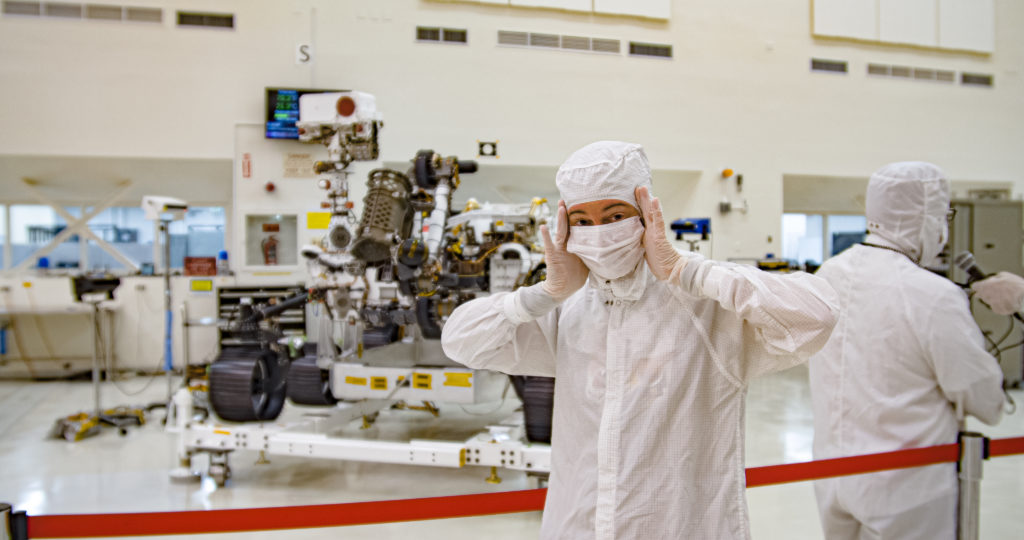Visit my Etsy store
to browse and buy my
space-themed sculpture and jewelry!
Emily Lakdawalla is an internationally admired science communicator and educator, passionate about advancing public understanding of space and sharing the wonder of scientific discovery. Her first book, The Design and Engineering of Curiosity: How the Mars Rover Performs Its Job was published by Springer-Praxis in March 2018.
Emily originally studied geology at Amherst College, Massachusetts, working with professor Tekla Harms on her field studies of deformed metasedimentary rocks in northeastern Washington. Following college she spent two years teaching fifth and sixth grade science at Lake Forest Country Day School in Lake Forest, Illinois. While conducting fifth grade “Space Simulation” projects inspired by the dramatic space events of 1996 and 1997 — the Pathfinder landing, Galileo images from Jupiter, and the launch of Cassini — it occurred to Emily to wonder whether she could be an extraterrestrial geologist. The answer: yes.
During her graduate studies at Brown University, she worked with James W. Head and Marc Parmentier on analysis of Magellan radar images and topographic data in the region of Baltis Vallis, Venus, to determine its deformational history. But her single peer-reviewed publication is about the MOLA topography of a putative stratovolcano on Mars. While there, she discovered the vast, public archive of NASA images: huge numbers of incredible photographs of the Solar System that had barely been seen. Emily found her calling: to share these stunning views of other worlds with a world unaware of their existence.
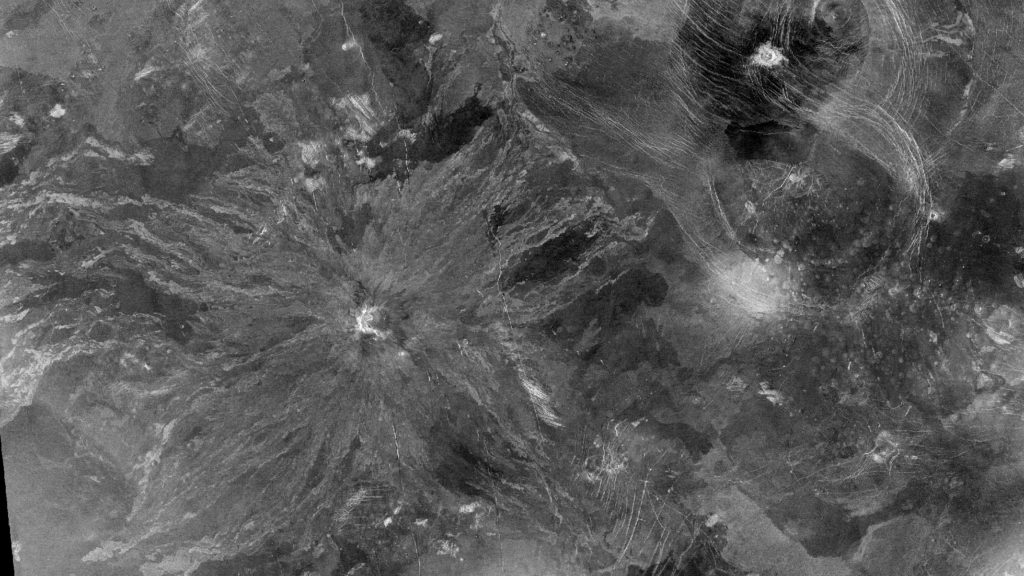
Credit: NASA / JPL / Emily Lakdawalla
Emily joined the staff of The Planetary Society in 2001 to oversee a portion of the Society’s Red Rover Goes to Mars project, an education and public outreach program on the Mars Exploration Rover mission funded by LEGO. She ran worldwide contests that selected and trained high school students to travel to Pasadena to participate in rover operations training exercises in 2002 and then in actual Mars Exploration Rover mission operations during January and February of 2005.
She has written about robotic exploration of the planets for The Planetary Society since 2002, contributing news, blogs, processed images, and more to the website, planetary.org, and the Society’s member magazine,
The Planetary Report. For nearly as long, she has contributed to the weekly Planetary Radio podcast, answering listener questions or rounding up the latest space news from the blog. In 2018 and 2019, Emily was editor of The Planetary Report.
Since 2005, she has been an Administrator of the forum UnmannedSpaceflight.com. As a result of her work with UnmannedSpaceflight.com, Emily has become a leader in a worldwide community of amateur space image processors. These enthusiasts take advantage of the enormous archives from five decades of planetary exploration missions, applying creative talent to the processing of sometimes gnarly data into scenes of awesome beauty. Emily frequently highlights their work on her blog, in print articles, and through public talks and private speaking engagements.
Emily is also a contributing editor to Sky & Telescope magazine. She has written articles for them on Saturn’s icy moons; amateur image processing; the Late Heavy Bombardment; the Curiosity mission; water on Mars; Dawn; New Horizons; and the Kuiper belt. Her first book, The Design and Engineering of Curiosity: How the Mars Rover Performs Its Job was published by Springer-Praxis in March 2018. A second book, Curiosity and Its Science Mission: A Mars Rover Goes to Work will follow in 2021. She is an expert on children’s books about space and does freelance work fact-checking and writing introductions for them. She has also consulted to space documentaries.
She was awarded the 2011 Jonathan Eberhart Planetary Sciences Journalism Award from the Division for Planetary Sciences of the American Astronomical Society for her blog entry about the Phoebe ring of Saturn. Asteroid 274860 was formally named “Emilylakdawalla” by the International Astronomical Union on July 12, 2014. She received an honorary doctorate from The Open University in 2017 in recognition of her contributions in communicating space science to the public.
Emily has been a member of the Planetary Data System Ring-Moon Systems Node Advisory Council (RNAC) since 2015. She has been a member of the Board of OpenPlanetary since its founding in 2018. She has been member of the Advisory Board of the Society for Women in Space Exploration (SWISE) since its founding in 2019.
Emily resides in Los Angeles with her husband (a professor of economics at the University of Southern California) and two daughters. She can be reached at emily@lakdawalla.com or @elakdawalla on Twitter. She blogs on Patreon at patreon.com/elakdawalla.
Photos: Father & Sun Productions for The Planetary Society


